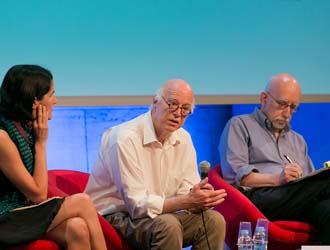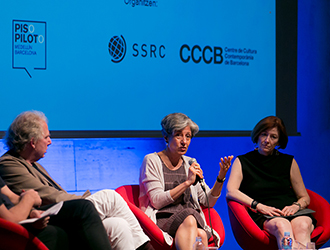The Mexican historian stresses the concept of “possibility” when he speaks of public space. By this he means what might happen when one is part of it, either actively or passively.
Shared Spaces recorded this conversation with Mauricio Tenorio in July 2015 when he visited the Centre of Contemporary Culture of Barcelona (CCCB) in order to take part in a seminar in the cycle “The Possible City”, which was jointly organised with the Social Science Research Council of New York on 2 and 3 July this year. Other speakers in the cycle were Richard Sennett, Ira Katznelson, Teresa Caldeira, Diane Davis and Richard Burdett.
Mauricio Tenorio, a Mexican historian now residing in Chicago, uses the framework of “possibility” when speaking of public space. He believes that what defines our spaces is the fact of being able to “witness something or participate in something”, and this, he says, opens up a wide range of features which define public space: “constant possibility defines the space […] from sinning and even violence through to interaction, practice and connection”. Then again, he accepts that, “States and governments can do a lot to favour public spaces”, although he warns against the dangers of too much restriction or excessive intervention. Tenorio says, “The great virtue of a public space is that it is unpredictable”.
When asked about his favourite public space, he speaks of Mexico City and a walk from San Cosme, a bustling working-class neighbourhood to calle de Tacuba with its impressive colonial architecture, street sellers, and variety of people. He says that this is a place where “just witnessing it is very beautiful”. He concludes by demolishing one of the most common clichés about the city: “Contrary to what people believe, you can walk around Mexico City perfectly well if you stop being afraid.”





